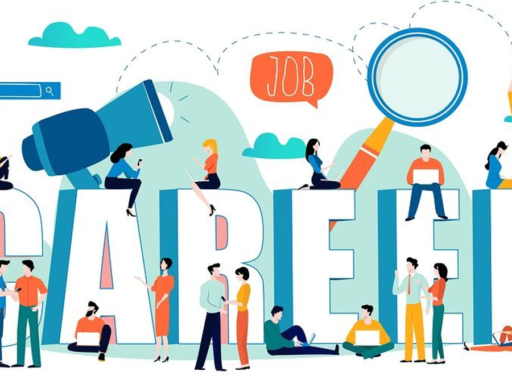Introduction:
In the fast-paced world of design, collaboration stands as a cornerstone for innovation, growth, and unparalleled creativity. Whether in small teams or vast networks, designers thrive when they unite, leveraging their diverse skills and perspectives to tackle challenges, inspire one another, and craft extraordinary solutions. This exploration delves into the transformative power of collaboration in creative projects, illuminating its profound impact on the design process, outcomes, and the very fabric of the design community.
- Strength in Diversity:
- Diversity of thought, background, and expertise fosters a fertile ground for creativity to flourish. When designers from varied disciplines come together, they bring fresh perspectives and insights that transcend conventional boundaries, leading to more holistic and innovative solutions.
- Case Study: A multidisciplinary team comprising graphic designers, UX/UI specialists, and industrial designers collaborates on a product redesign project. By blending their unique skills and viewpoints, they create a seamless user experience that seamlessly integrates aesthetics with functionality.
- Cross-Pollination of Ideas:
- Collaboration acts as a catalyst for idea generation, sparking creativity through lively discussions, brainstorming sessions, and design critiques. By sharing and refining ideas collectively, designers push the boundaries of possibility, exploring new concepts and approaches that may have remained undiscovered in isolation.
- Example: An impromptu design jam brings together designers from diverse backgrounds to tackle a pressing social issue. Through spirited collaboration and rapid prototyping, they develop a groundbreaking campaign that resonates deeply with the audience, sparking meaningful conversations and driving positive change.
- Efficient Workflow and Division of Tasks:
- Effective collaboration hinges on streamlined workflows, clear communication channels, and judicious task allocation. By leveraging project management tools, designers coordinate seamlessly, ensuring that each team member contributes their expertise towards a shared vision while staying on track with deadlines and deliverables.
- Best Practices: Implementing agile methodologies, such as Kanban or Scrum, helps teams prioritize tasks, adapt to changing requirements, and maintain momentum throughout the project lifecycle, fostering a culture of accountability and collaboration.
- Inspiration and Motivation:
- Collaboration fuels a sense of belonging and camaraderie within the design community, providing designers with a supportive network of peers who inspire, challenge, and uplift one another. Constructive feedback, encouragement, and shared victories serve as catalysts for personal and professional growth, motivating designers to push their boundaries and strive for excellence.
- Testimonial: Renowned designer shares their experience of collaborating with fellow creatives on a passion project. Through mutual encouragement and creative synergy, they surpass their initial expectations, producing a masterpiece that reflects the collective brilliance of the team.
- Overcoming Challenges:
- Collaboration is not without its hurdles, as differing opinions, communication barriers, and conflicting priorities may arise. However, by fostering a culture of respect, empathy, and open dialogue, designers can navigate these challenges effectively, transforming potential roadblocks into opportunities for growth and innovation.
- Strategies for Success: Establishing clear communication protocols, setting mutual goals, and cultivating a culture of constructive feedback promotes transparency and trust within the team, fostering a harmonious and productive working environment.
- Future of Collaboration in Design:
- The advent of digital collaboration tools, remote work practices, and virtual reality platforms heralds a new era of collaborative design. As geographical barriers dissolve and global networks expand, designers have unprecedented opportunities to connect, collaborate, and co-create across borders, fostering a truly inclusive and diverse design community.
- Vision for Tomorrow: Envisioning a future where designers leverage cutting-edge technologies, such as AI-driven design assistants and collaborative virtual environments, to augment their creative capabilities, accelerate innovation, and redefine the boundaries of possibility in design.
- Community Building and Networking:
- Beyond project-specific collaborations, designers benefit from building strong professional networks and communities. Online platforms, industry events, and local meetups serve as avenues for designers to connect, share knowledge, and forge meaningful relationships with peers.
- Insights from the Field: Designers share anecdotes of how networking events or online communities have facilitated valuable connections, mentorship opportunities, and collaborative partnerships, enriching their professional journey and expanding their horizons.
- Cultural Exchange and Global Collaboration:
- Collaboration transcends geographical boundaries, allowing designers from different cultures and regions to come together, exchange ideas, and co-create across continents. Cultural diversity enriches the collaborative process, infusing projects with unique perspectives, traditions, and aesthetics.
- Case Study: A global design consortium comprising members from diverse cultural backgrounds collaborates on an international design competition. By celebrating cultural diversity and embracing cross-cultural exchange, they produce a winning design that resonates with audiences worldwide, bridging cultural divides and fostering mutual understanding.
- Empowering Emerging Designers:
- Collaboration presents valuable opportunities for emerging designers to learn, grow, and gain exposure in the industry. Mentorship programs, collaborative workshops, and internship opportunities provide emerging talents with hands-on experience, guidance, and access to professional networks.
- Success Story: A seasoned designer shares their experience mentoring emerging talents through a collaborative design project. By providing guidance, constructive feedback, and real-world experience, they empower emerging designers to unleash their creativity, build confidence, and kickstart their careers in design.
- Measuring Impact and Success:
- Collaboration in creative projects yields tangible and intangible benefits, from innovative design solutions to enhanced professional relationships and personal growth. It’s essential to assess the impact and success of collaborative efforts, not just in terms of project outcomes but also in fostering a culture of collaboration within the design community.
- Metrics of Success: Design teams reflect on key performance indicators (KPIs) such as client satisfaction, project delivery timelines, team morale, and individual growth to evaluate the success of collaborative projects. Celebrating milestones, acknowledging contributions, and learning from challenges further strengthens the fabric of collaboration within the design community.
Conclusion: In a world where creativity knows no bounds, designers stand united as architects of change, visionaries of possibility, and champions of collaboration. By embracing the power of collaboration in creative projects, designers unlock a world of endless possibilities, where collective genius flourishes, boundaries dissolve, and extraordinary visions come to life. Together, as a unified force, designers shape the future of design, leaving an indelible mark on the world and inspiring generations to come.






